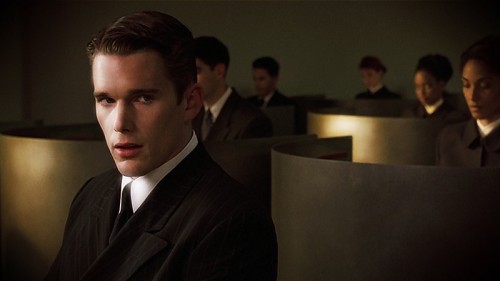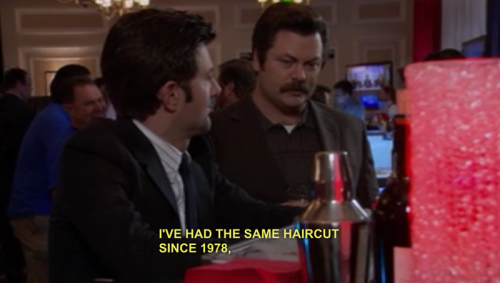I have this fear of going to barber shop to get a haircut. I’ve had it for a long time. I don’t really know why that is. I know I hate barbershops because all the mirrors make me feel self conscious. I hate making small talk with barbers and hair stylists. I hate the smell of hair products. Yet all of these are peripheral things and do not fully explain my anxiety about it. Finally, two days ago, when I went into a barbershop for the first time in a year, I realized where my fear lies: in the problem with language.
As you know, going into a barber shop or hair salon requires one to explain what kind of hair she/he wants. The majority of that explanation is done through words. For me, this is where words fail miserably. I feel that I don’t have the right vocabulary to explain the complicated form and shape of the hair I want. This results in me feeling defeated every time the barber holds up the mirror behind my brand-new haircut. Not that I am a particularly fashionable (if at all fashionable) or neurotic individual, but when there is cash involved and a service exchanged, I do want satisfaction. When it is not there when I walk out the door, my fear and anxiety get the best of me.
But there are people who get good haircuts. I have seen them on the streets. Sometimes I even turn around and stare at them for a few seconds longer, wishing the same thing could happen on my head. These people must have the command of words that I lack. These people must knew the nuance of each word they conjure up to achieve an image that is understood perfectly between him/her and the hairdresser. How come I can never achieve such command of words for my hair?
What it comes down to, I have to conclude, is that I just don’t have the sufficient lexicon to describe hair: the form, the flow, the angle, the volume, the direction, the curvature, etc. Probably deep down I just don’t care about hair enough to really acquire these words. Then I realized, it’s not really about hair at all. My real anxiety has to do with my relationship with language. I want my words to succeed.
This, of course, is a bigger issue than just hair; recently I have been thinking about whether an idea first originates as words, or as images. I haven’t reached a conclusion yet, but I’ve slowly realized (through my work on this project) that we not only mostly think with words, words also play a powerful role in how I myself perceive and interact with my surroundings. In that sense, our command of languages has great significance to our immediate environment (thoughts, hair on top of my head) as well as the world we engage with and the institutions that govern us.
In the Singapore art scene, there are a lot of things that are shifting and reshaping. I am slowly trying to wrap my head around them. About three month ago, artist Samantha Lo (aka Sticker Lady) got arrested for putting up stickers in public spaces and spray painting on the street. If convicted, her full sentence will be to pay up to USD$1500 in fines or spend three years in jail. This has rallied a community of people in the arts to sign a petition to reduce Lo’s sentence. The online and public discussion also led people to question who owns public spaces, and what is art. Singapore boosts its well-known reputation for cleanliness and order at the cost of freedom of expression. As a result, street art is nonexistent in this country. Meanwhile there are designated zones for graffiti, but that really takes away from the essence of what street art is.
When I heard the news about Samantha Lo I quickly recalled the documentary Style Wars (1983). Even though I have never lived in New York or experienced America in the 1980’s, this film, its sound, images, and interviews, became part of my understanding of the American cultural landscape. Sure, New York City has cleaned up a lot since the 1990’s, but one cannot deny these spray-painted visual forms and street-level antagonism are important to what make New York City, well, New York City.
In the age of rapid globalization, free-flowing information, goods, and services are making borders less and less relevant. This prompts more countries to engage in a discussion of what national identity means in the 21st century. Singaporeans included, of course, especially because it is a country where foreigners make up more than a quarter of the population. I am thinking about this hefty issue because, watching Style Wars, I recognize a romanticized past that I myself did not experience. The film, among other cultural artifacts and products, made me realized that it is these visual forms and ideologies that come from different levels of society–high and low, official and unofficial, mainstream and alternative–that make me identify as an (eclectic) American. This has romanticized America for me as a place that harbors different cultures, tradition, and forms of art (whether these are authentic experiences or not, is another story).
In the case of Singapore it becomes more problematic when the government insists on having a strong hand in shaping collective identity through art. Without a substantial private market for the arts, the government is the biggest supporter of its arts. Through the National Arts Council (NAC), the government distributes funding based on which institution best fits its nationalistic agenda. Along with Samantha Lo’s arrest, NAC’s unilateral decision to withdraw the Singapore pavilion from the Venice Biennale after 10 years of previous participation, its releasing of a new funding scheme that shifts focus to community arts, and the government’s plan to eradicate one of the nation’s oldest cemeteries to make way for more housing and highways have sparked debates here throughout the year. If art and culture really play an important part in forming a national identity, then how does one think about a government that is aggressively shifting those areas in ways that further its own agenda?

Will we ever live in a future where everyone dons the same hair cut? Still from the movie"Gattaca" (1997, Columbia Pictures).
To use the haircut thing as a semi-working analogy: the artist is the one walking into a hair salon for a haircut. The better the artist can communicate with the hairdresser–who in this analogy is the NAC–the better the outcome. I say this is not a full working analogy because it would have to assume that the NAC is neutral. For the sake of satirizing the analogy: what if all hairdressers belonged to the same union and started to tell us what’s the best hair for everyone. In other words, artists not only have to know what they want, they need to know how to say it–otherwise, someone else will say it for them.
There will have to be a lot of negotiations between the art practitioner and the government in the coming days. There will be a lot of anxiety because the outcome is uncertain. When it is all over and done, will Samantha Lo’s works be deemed vandalism, or street art? The works themselves will remain the same, but the words we use to describe them greatly change how we perceive it. Will the NAC listen to the demands of artists and rejoin the Venice Biennale in 2015? Words are not just for writing history–they can manifest a future as well.
In my up-coming blog entries, I want to look at Singapore’s fast-changing cityscape, and explore how it affect artists’ practices, collective memories, and sense of nostalgia.





Pingback: New Hairdo for a New Era | Uber Patrol - The Definitive Cool Guide